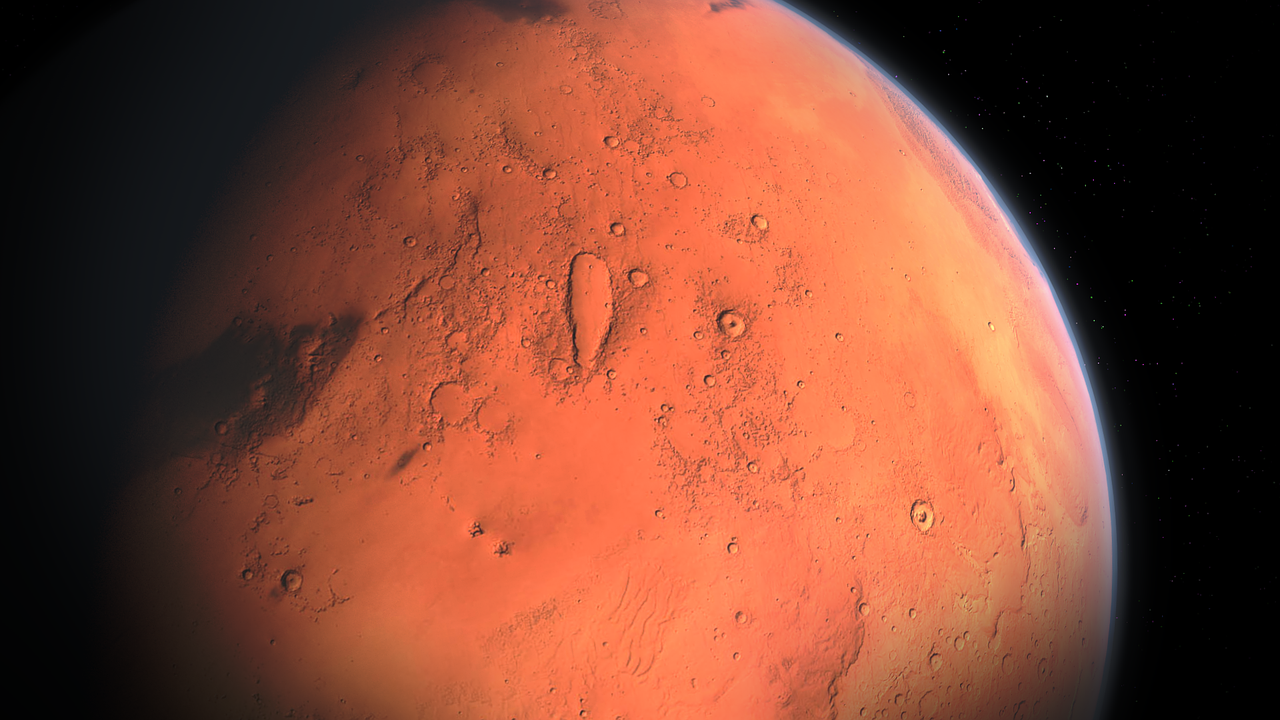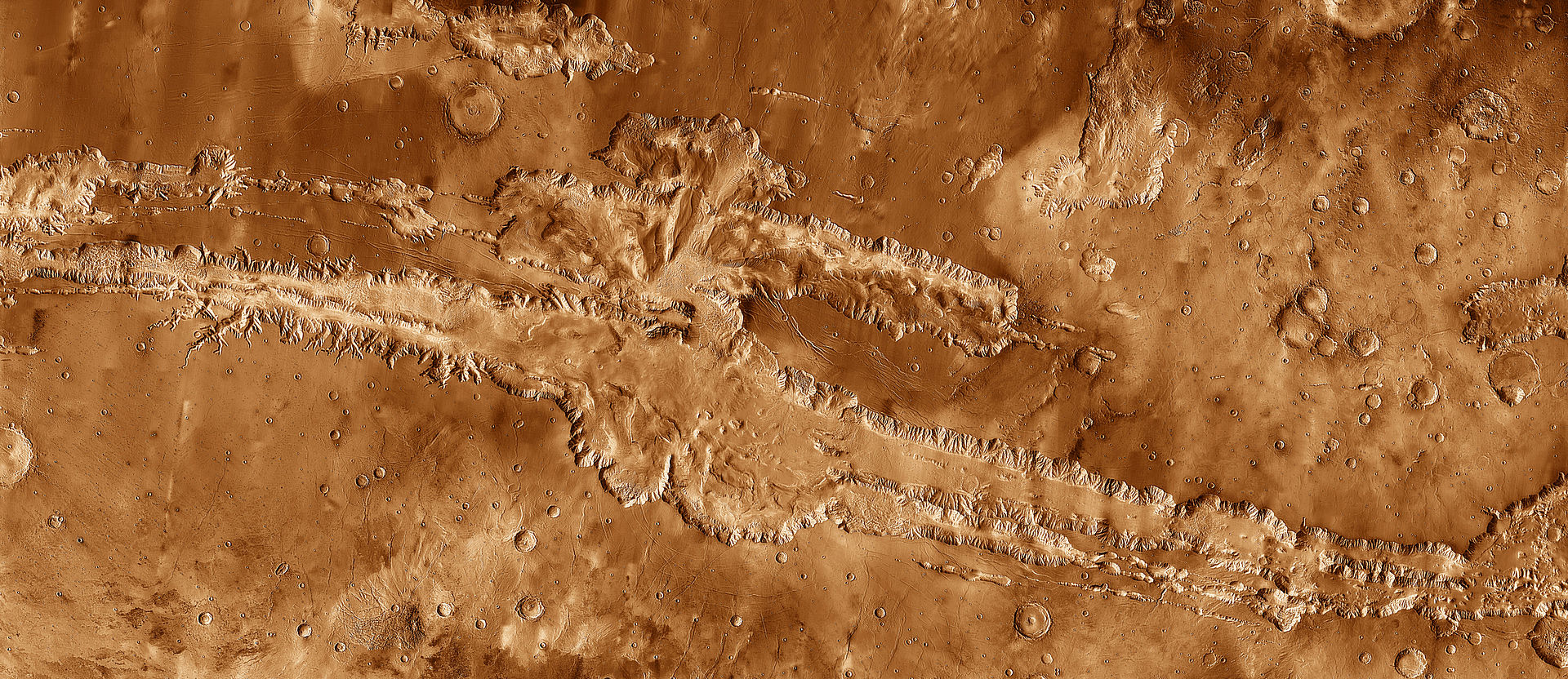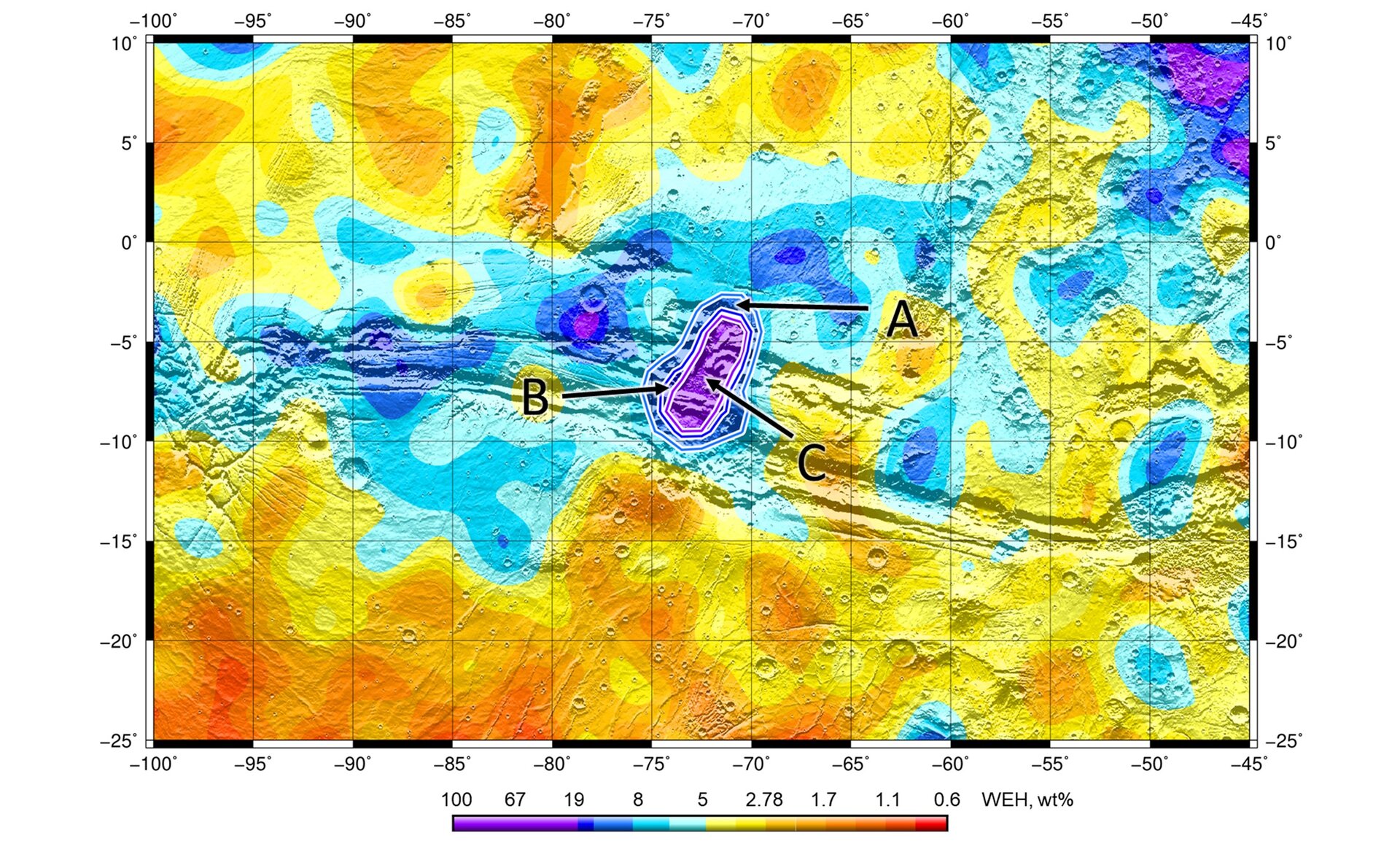
Researchers from the European Space Agency have just got their hands on a large amount of water, which would rest under the largest canyon in the solar system.
The search for extraterrestrial life continues to go well. In practice, this often involves the search for water, an essential component of carbon-based life as we know it. We already know that our red neighbor, Mars, houses a certain amount; ESA astronomers have just announced that they have still found a significant amount.
In any case, this is what the researchers concluded when they received the last readings from the Trace Gas Orbiter (TGO). It is a satellite currently parked in orbit around Mars; one of the missions is to map the presence of hydrogen, which constitutes a good approximation of water content in this context.
Usually, astronomers rather expect to find traces of water in the polar regions, where it resides. in the form of ice. On the other hand, it is much rarer in equatorial regions, which are much more exposed to solar radiation. In these regions, therefore, there is no surface water.
But it takes more to stop GERD. Thanks to an instrument called FREND, it is indeed able to locate its target in depth. “With the TGO, we can look up to a meter below this layer of dust to see what is happening below the surface.”, Explains Igor Mitrofanov, resident of the Moscow Academy of Sciences. “This allows us to spot“ oases ”rich in water that were invisible to our other instruments.”, He adds.

Scan the basement from orbit
A very promising concept and which works wonderfully, since it spotted traces of water in one of the largest geological structures in the solar system: Valles Marineris, a network of canyons ten times longer and five times deeper than the Grand Canyon. “FREND has revealed a large amount of hydrogen located in the canyons of Valles Marineris”, Continues the researcher. “It’s a lot more water than expected”, He insists. He even explains that “40% of the material in the nearby basement ” would be water!
In all likelihood, it will probably be ice. But if FREND is excellent for detecting traces of hydrogen, it does not however make it possible to deduce the form in which it is stored. This will therefore be the next step for researchers. “We are going to need more observations to know for sure what form of water we are dealing with.”, Explains Alexey Malakhov, co-author of the study.

But it is nevertheless a “superb step”, according to the researchers themselves. And there is indeed something to be excited about. Because in addition to having got hold of a new object of study, this work has above all made it possible to confirm the correct functioning of FREND. They should therefore be able to identify other “oases”, Which will certainly provide us with answers to some crucial questionss.
“Learning more about where and how water exists on Mars today is essential to understanding what happened to Martian water, which was once plentiful.”, Explains Alexey. “This will advance our research on potentially habitable environments, possible signs of life, and even organic material that may date from the origins of Mars.”, He concludes.
The text of the study is available here.



